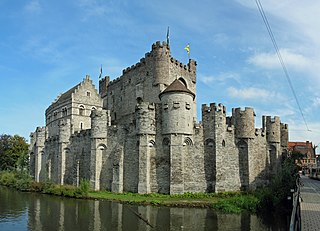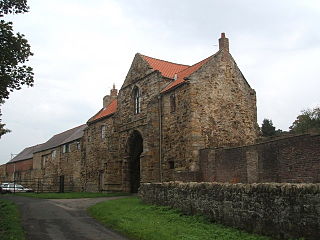 W
WThe Basilica Abbey of San Mercuriale is the main religious building in Forlì, in Romagna ; the rather smaller cathedral was largely destroyed by fire in the 19th century.
 W
WSt John the Baptist Church is a Grade I listed parish church in Cardiff, Wales, the only church dating to pre-Medieval times in Cardiff city centre and the only medieval building other than Cardiff Castle.
 W
WThe Gravensteen is a medieval castle at Ghent, East Flanders in Belgium. The current castle dates from 1180 and was the residence of the Counts of Flanders until 1353. It was subsequently re-purposed as a court, prison, mint, and even as a cotton factory. It was restored over 1893–1903 and is now a museum and a major landmark in the city.
 W
WHøre Stave Church is a stave church located at Ryfoss in the municipality of Vang in Innlandet county, Norway.
 W
WKepier Hospital was a medieval hospital at Kepier, Durham, England.
 W
WMalmesbury Abbey, at Malmesbury in Wiltshire, England, is a religious house dedicated to Saint Peter and Saint Paul. It was one of the few English houses with a continuous history from the 7th century through to the Dissolution of the Monasteries.
 W
WNorman House on Steep Hill, Lincoln, England is an historic building and an example of Norman domestic architecture.
 W
WThe Synagogue of Santa María la Blanca is a museum and former synagogue in Toledo, Spain. Erected in 1180, according to an inscription on a beam, it is disputably considered the oldest synagogue building in Europe still standing. It is now owned and preserved by the Catholic Church.
 W
WThe Church of Saint Faith of Sélestat is a major Romanesque architecture landmark in Sélestat along the Route Romane d'Alsace in the East of France. The church having been built over a very short time span, it appears strikingly homogenous in style and proportions, however some parts have been completed and others modified in a Romanesque Revival style by the architect Charles Winckler between 1889 and 1893. During that restoration campaign, a crypt dating back to around 1085 was discovered and made accessible as well. Like many major buildings in Alsace the church is made of pink Vosges mountains sandstone.